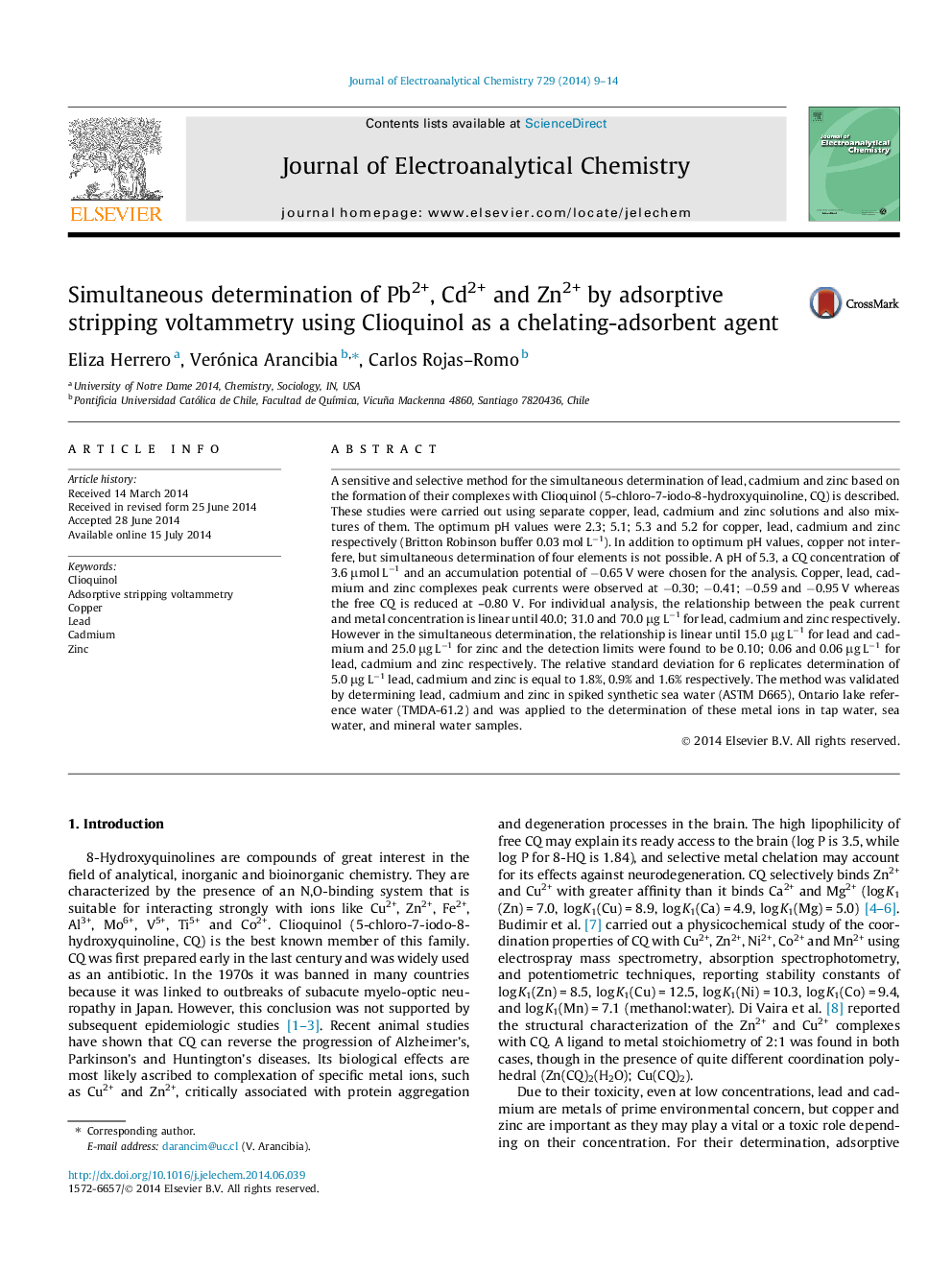| Article ID | Journal | Published Year | Pages | File Type |
|---|---|---|---|---|
| 218695 | Journal of Electroanalytical Chemistry | 2014 | 6 Pages |
•A sensitive and selective method for the determination of Pb, Cd and Zn is presented.•The method is based on the adsorptive accumulation of Clioquinol complexes onto HMDE.•Adsorptive and anodic stripping voltammograms with HMDE and HgFE were compared.•All three metals gave peaks that were distinctly separated by about 200 mV.
A sensitive and selective method for the simultaneous determination of lead, cadmium and zinc based on the formation of their complexes with Clioquinol (5-chloro-7-iodo-8-hydroxyquinoline, CQ) is described. These studies were carried out using separate copper, lead, cadmium and zinc solutions and also mixtures of them. The optimum pH values were 2.3; 5.1; 5.3 and 5.2 for copper, lead, cadmium and zinc respectively (Britton Robinson buffer 0.03 mol L−1). In addition to optimum pH values, copper not interfere, but simultaneous determination of four elements is not possible. A pH of 5.3, a CQ concentration of 3.6 μmol L−1 and an accumulation potential of −0.65 V were chosen for the analysis. Copper, lead, cadmium and zinc complexes peak currents were observed at −0.30; −0.41; −0.59 and −0.95 V whereas the free CQ is reduced at –0.80 V. For individual analysis, the relationship between the peak current and metal concentration is linear until 40.0; 31.0 and 70.0 μg L−1 for lead, cadmium and zinc respectively. However in the simultaneous determination, the relationship is linear until 15.0 μg L−1 for lead and cadmium and 25.0 μg L−1 for zinc and the detection limits were found to be 0.10; 0.06 and 0.06 μg L−1 for lead, cadmium and zinc respectively. The relative standard deviation for 6 replicates determination of 5.0 μg L−1 lead, cadmium and zinc is equal to 1.8%, 0.9% and 1.6% respectively. The method was validated by determining lead, cadmium and zinc in spiked synthetic sea water (ASTM D665), Ontario lake reference water (TMDA-61.2) and was applied to the determination of these metal ions in tap water, sea water, and mineral water samples.
